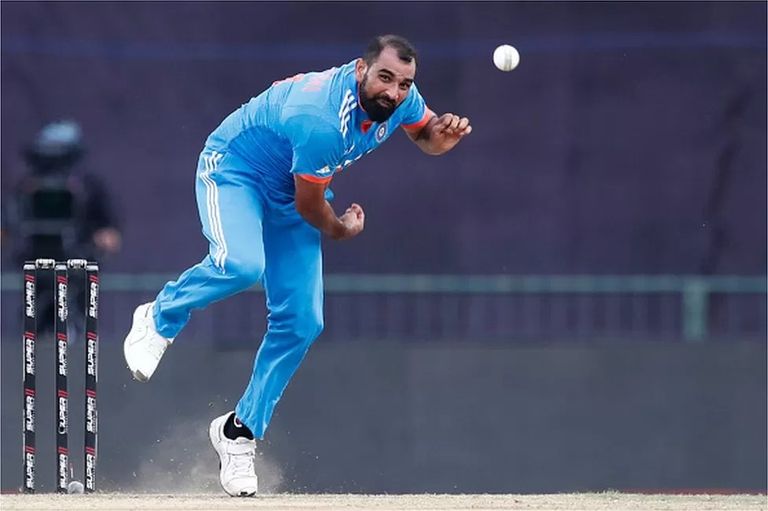When India clinched their maiden Cricket World Cup title in 1983 their bowling unit primarily consisted of all-rounders often described as 'bits and pieces' cricketers who could contribute a bit with the ball and the bat. However, as we fast forward to the present India's strategy has undergone a remarkable transformation shifting from the emphasis on defensive bowlers to a formidable pace attack. In this article, we explore how India's pace attack has emerged as its strength and the key factors behind this transformation.
In 1983 India's World Cup-winning squad featured bowlers who were primarily all-rounders. The likes of Madan Lal, Roger Binny, Sandeep Patil, and Mohinder Amarnath, while effective, were not specialist bowlers. The focus in one-day cricket during that era was more on restricting the opposition's run-scoring rather than taking wickets.
Fast forward to the 2011 World Cup hosted by India and we witness a significant shift. India's top top-order batsmen including legends like Sachin Tendulkar, Yuvraj Singh, and Virender Sehwag, could all bowl effectively. This shift marked a transition from bowlers who could 'do a bit' to genuine wicket-taking options. In that tournament, medium pacers dominated the bowling charts with Zaheer Khan leading the way.
As we approach the 2023 World Cup the Indian team's composition reflects a new era of specialists. The squad lacks top-order players who can contribute significantly with the ball emphasizing the need for specialists. This shift may seem contrary to the traditional ethos of one-day cricket where every player is expected to be versatile. However, the strategy adapts to the players available.
India's bowling lineup for the 2023 World Cup boasts a formidable pace attack with Jasprit Bumrah, Mohammed Siraj, Mohammed Shami, Shardul Thakur, and Hardik Pandya leading the charge. Bumrah's return from injury adds strength to the unit. Siraj's exceptional performances in the Asia Cup finals might earn him a spot in the playing XI. The competition for the third seamer's slot between Shami and Thakur highlights the depth of India's pace resources.
While the exact nature of the pitches remains uncertain initial matches are likely to favor fast bowlers. Spinners might come into play as the tournament progresses and pitches wear down. Additionally, the dew factor which often hampers spin bowling for the team bowling second will influence team selections and strategies. Finding the right balance will be crucial in adapting to various playing conditions.
In India's bowling arsenal, Kuldeep Yadav has emerged as a leading ODI spinner while the inclusion of Ravichandran Ashwin further strengthens the spin department. With Ravindra Jadeja providing an additional spin option India enjoys the luxury of playing three spinners when needed.
India is not the only team with a potent pace attack. England, Australia, and Pakistan also boast impressive fast-bowling lineups. The 2023 World Cup might well be seen as a battle of pace attacks with India standing strong among the contenders.
India's transformation from 'bits and pieces' cricketers to specialist bowlers highlights their adaptability and commitment to staying at the forefront of international cricket. As they enter the 2023 World Cup their pace attack stands as their greatest strength ready to take on the world's best.
